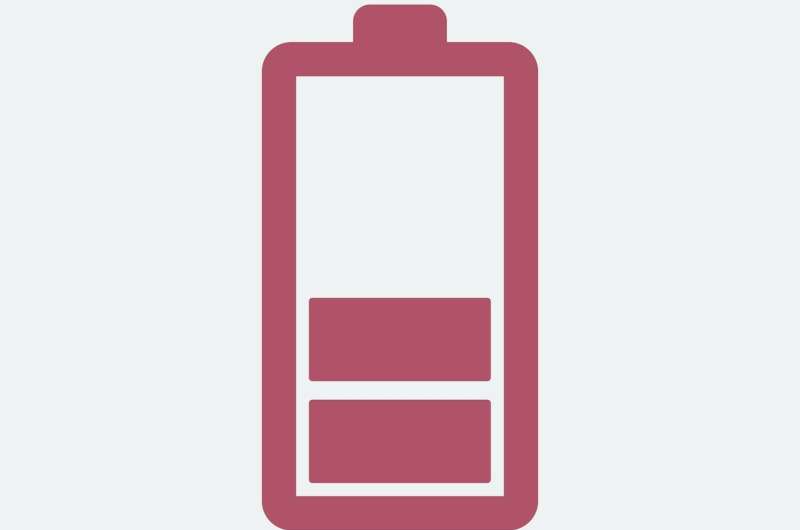New 3D microbatteries stand up to industry standard thin-film counterparts

The thin-film lithium-ion batteries used in microdevices such as portable and medical electronics may supply a good amount of power relative to their mass, but do not provide enough power for many devices due to their limited size. Researchers have introduced a fabrication process that builds microbatteries with thick, 3D electrodes using lithography and electrodeposition—and seals each unit in a gel electrolyte-filled package. The new prototype shows the highest peak power density of any reported microbatteries, the researchers said.
The new study, led by University of Illinois Urbana-Champaign postdoctoral researcher Pengcheng Sun and materials science and engineering professor Paul Braun, is published in the journal Advanced Materials.
Most microbatteries have very thin, flat anodes and cathodes, which are great for saving space but do not pack the punch needed for the wireless transmission needs of today's technologies, the researchers said.
"The answer might seem to be to use thicker electrodes, which could hold more energy on a confined footprint, but that alone will only increase the pathway that ions and electrons must travel, cutting down on power," Sun said. "Using 3D porous electrodes filled with liquid electrolyte can shorten this pathway, but it is extremely challenging to package such microbatteries."
The team said there is one study that used imprinting lithography to build a 3D microbattery that achieved high peak power using a liquid electrolyte, but the performance of that example was measured from an unsealed battery under laboratory conditions.
In the new study, the team developed a unique capillary filling process that could fill gel electrolyte into the 3D porous electrodes, making airtight packaging of the microbattery possible.
"Using the thicker gel electrolyte instead of a liquid gives us much more control," Braun said. "The gel-nature of the electrolyte gives us more time to seal the battery without the electrolyte spilling out. And, by default, the gel also makes for a safer lithium-ion battery because it is less likely to leak, which can be a problem in liquid electrolyte-filled lithium-ion batteries."
The new packaged battery cells have high energy and power densities of 1.24 Joules per centimeter squared and 75.5 milliwatts per centimeter squared, respectively, which is about ten times better than what is currently available, the researchers said. The batteries can be cycled 200 times in normal conditions with 75% retention of the initial discharge capacity. and using a liquid electrolyte, new batteries provide an even higher power density of 218 milliwatts per centimeter squared, the study reports, showing the potential for further improvements.

"Our microbattery could provide a microscale autonomous power for 132 days," Sun said. "This is based on the reasonable assumption that this type of device draws 5 microwatts in standby mode and 5 milliwatts during data transmission, when the standby time is 100 seconds and the transmit time is 10 milliseconds."
The team said the fabrication and packaging techniques used in this study could accelerate the development of high-performance solid-state microscale storage devices with complex 3D electrode configurations.
More information: Pengcheng Sun et al. High‐Performance Packaged 3D Lithium‐Ion Microbatteries Fabricated Using Imprint Lithography, Advanced Materials (2020). DOI: 10.1002/adma.202006229

















